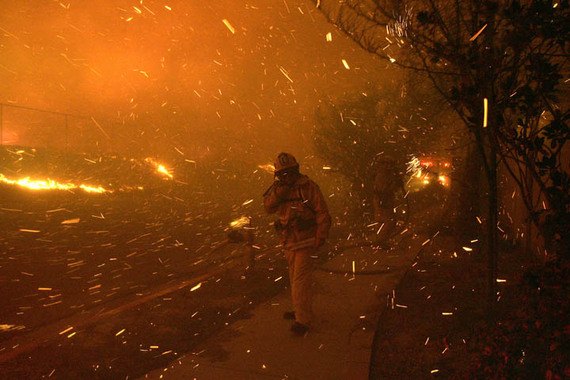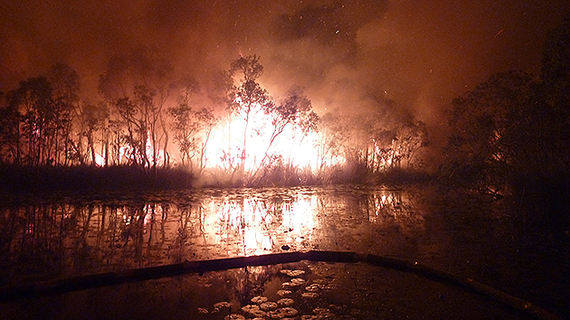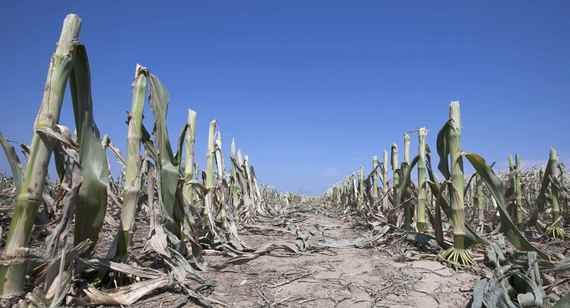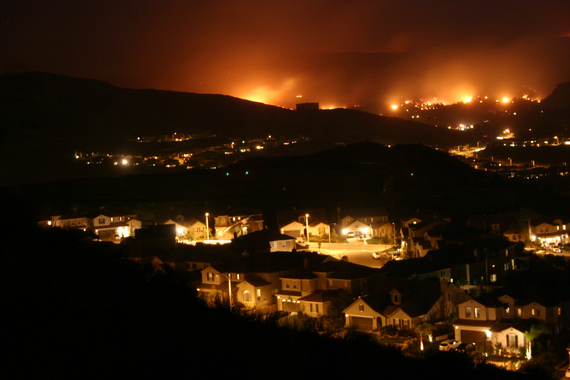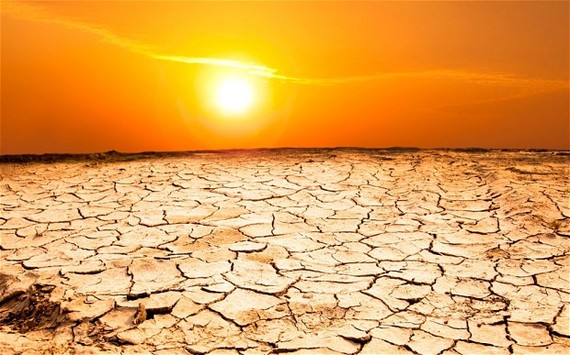Since the hellacious Firestorm of 2003 I've followed fires, droughts and water issues akin to a reporter chasing ambulances for the inside track on the latest, greatest stories. Even some of my closest colleagues can't believe that I have more passion today than I did as a rookie in 2003.
One of nature's fiercest acts of resetting her biological clock -- wildfires and our parched forests in a warming world burn hotter than scientists have ever witnessed before.
There are at least three things to be aware of if you live in California (and elsewhere): A warming world is fraught with drought that begets wildfires, the cost of fresh water is far too inexpensive, and failing to plan ensures that you have planned to fail.
A warming world is enveloped by more droughts that are lasting longer and killing livestock, wildlife and all vegetation including forests on every forested continent at a rate scientists have never seen in modern times.
In 2013 Californian cities and towns shattered many all-time dry records, some by staggering deficits. For instance, San Francisco received 3.38 inches of precipitation its lowest mark since the inception of continuous record keeping began in 1849 -- The Gold Rush. The normal annual San Francisco rainfall is 20.65 inches.
Los Angeles surpassed 1947 and 1953 when both years recorded 4.08 inches of rainfall. In 2013, Los Angeles notched just 3.60 inches of precipitation the lowest since its continuous records began in 1877. A normal year in Los Angeles registers 14.93 inches. Also last year, the picturesque city of Sierra Madre sucked their aquifer dry and were forced to tap into controversial chloramine-treated water.
The introduced Australian Eucalyptus trees onto the Californian landscape present all sorts of difficulties particularly since this genus has explosive resins and thrives on fire-ladden landscapes.
Since May 2013, 90 percent of California has endured drought. This we know: After three consecutive dry winters in the first decade of the 21st century i.e. 2003, 2007 California gets plagued by firestorms. With the Sierra snowpack currently between 23-34 percent, 2014 marks our third successive dry winter. And to make matters even worse many Californian lakes and reservoirs are well below the 40 percent capacity level.
California is the nation's leading Agricultural producer at $44.7B, annually. The farmers' fields are now under a mandatory water conservation measure.
As the Golden State's water supply dwindles the borrowing costs on some bonds by California water agencies have almost doubled. The credit of at least 30 water agencies is in jeopardy because inexpensive water-use fees, rather than California's general taxes back the crippling debt.
The San Joaquin Valley irrigates the most productive and lucrative crops on the globe including $3B in almond sales or 1.5B pounds of nuts - 85 percent of the world's supply.
The district, based in Los Angeles, is the largest supplier of treated water in the U.S. serving 19M people or half the population of California spanning from Ventura to San Diego; and it has a $4B long-term water debt that it is escalating, quickly.
Californian water bonds are risky and investors are now demanding 2.85 percent points of extra yield to own tax-exempt Metropolitan Water District bonds maturing in 2037, up from 1.5 percent points in the previous six months.
This spring and summer of 2014 Californian water-starved forests are facing a severe risk of Firestorms from three consecutive bone-dry winters.
Unless California's lakes and reservoirs receive ample moisture (and climate models predict they won't) during the remainder of January, February and March we can expect the water rates to rise and our tinder-box-dry forests to burn. And, by the way, those San Joaquin farmers are facing at least $1B in crop losses and so the price of food at the supermarket is set to rise, again.
California is the eighth mightiest economy in the world, we need an innovative plan for a drier future on a warming globe, but in the meantime it's up to each one of us to lend a helping hand by reducing our household water consumption in preparation for mandatory water conservation measures likely to be implemented later this year.
Earth Dr Reese Halter is a broadcaster, biologist, educator and author of The Insatiable Bark Beetle: A Harbinger of Global Warming.

